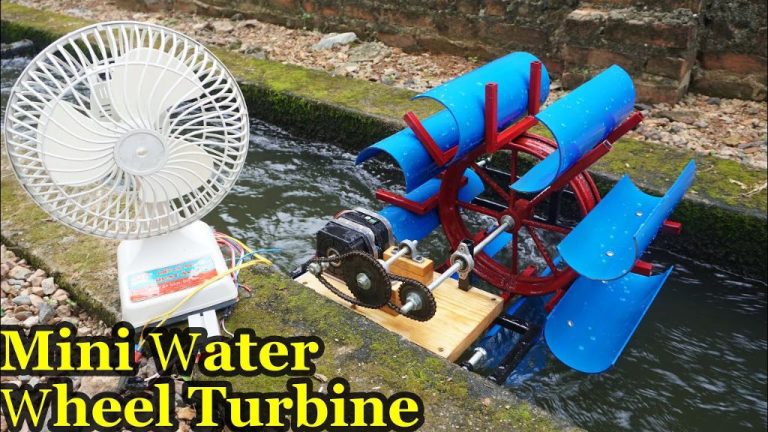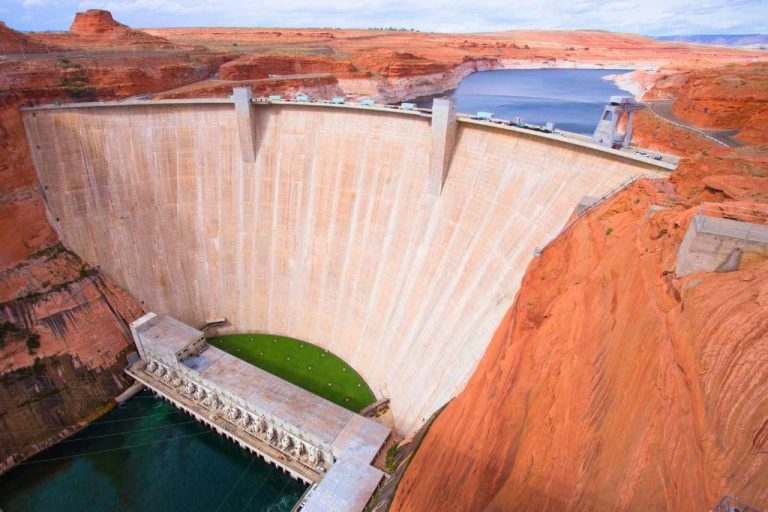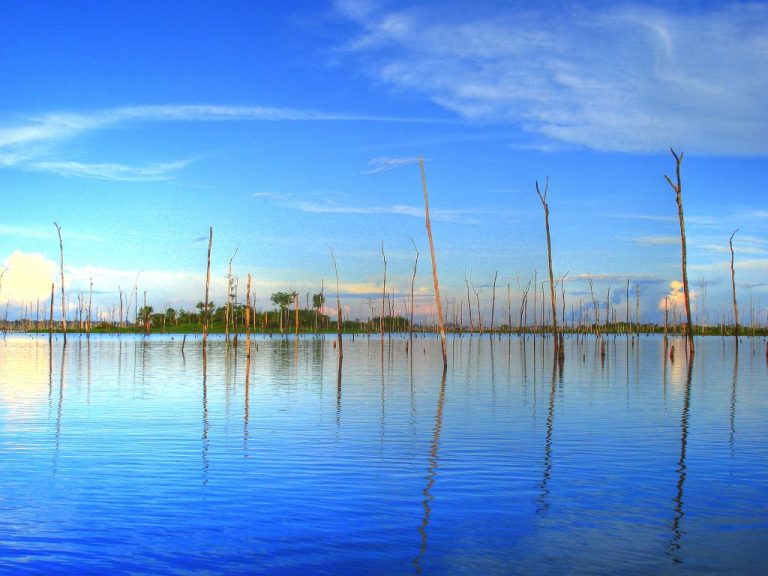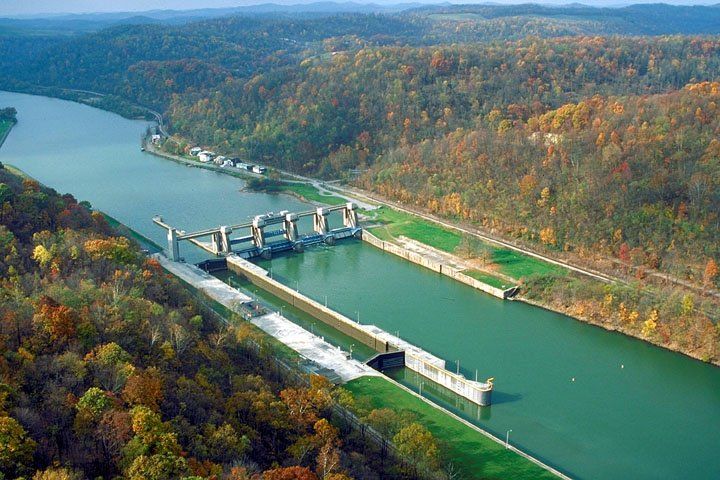Is Hydropower A Type Of Mechanical Energy?
What is Hydropower?
Hydropower is a type of renewable energy that utilizes the natural flow of water to generate electricity. It is considered a form of mechanical energy converted into electrical energy.
Hydropower plants capture the energy of flowing water by means of a dam constructed across a river that creates a reservoir. The force of the water entering the turbine turns a generator to produce electricity. The water may be released or recycled through the turbine.
There are three main types of hydropower facilities:
- Impoundment: A dam is constructed to store river water in a reservoir.
- Diversion: A portion of a river is diverted to a channel leading to a turbine.
- Pumped storage: Water is pumped up to a reservoir and then released through turbines to generate electricity when needed.
Hydropower is currently the largest renewable energy source for electricity generation in the United States, supplying over 6% of the nation’s electricity. It relies on the water cycle and is thus classified as a renewable energy resource (https://www.energy.gov/eere/water/how-hydropower-works).
Hydropower and Mechanical Energy
Mechanical energy is the energy that an object possesses due to its motion or due to its stored position. For example, a rollercoaster at the top of a hill contains mechanical energy in the form of potential energy. As it moves down the hill, this potential energy gets converted to kinetic energy due to the motion of the rollercoaster.
Hydropower utilizes the mechanical energy of moving water to generate electricity. The potential energy from water stored in a reservoir or dam is converted to kinetic energy as the water falls and moves through the turbines. According to the U.S. Geological Survey, the moving water spins a turbine, which then spins a generator to produce electricity. So in essence, hydropower converts the mechanical energy of the moving water into electrical energy (Source).
Some examples of mechanical energy related to hydropower include the energy stored in water at an elevated level behind a dam, the kinetic energy of falling or flowing water, and the kinetic energy of the spinning turbines turned by the moving water.
Advantages of Hydropower
Hydropower has several key advantages that make it an attractive energy source:
Hydropower is a renewable energy source. The water cycle continuously replenishes the water in hydroelectric dams and reservoirs, allowing electricity to be generated indefinitely. As long as there is flowing water, hydropower can turn turbine generators to produce electricity without being depleted over time.
Hydropower facilities have an extremely long lifespan. With proper maintenance, dams and other infrastructure can last over 50-100 years. This provides consistent electricity production over many decades.
Hydropower has relatively low operating costs compared to other energy sources. Once a facility is constructed, the cost of maintaining dams and operating turbines is minimal. There is no need to purchase any type of “fuel” like with fossil fuel plants. This makes the electricity economical in the long-run.
Sources:
https://www.energy.gov/eere/water/benefits-hydropower
https://www.enelgreenpower.com/learning-hub/renewable-energies/hydroelectric-energy/advantages
Disadvantages of Hydropower
While hydropower provides clean, renewable energy, it also comes with some significant disadvantages.
One major drawback of hydropower is the high upfront costs. Constructing large dams and reservoirs incurs huge initial investments, with costs often running into the billions of dollars. According to the U.S. Department of Energy, hydropower is one of the most capital-intensive sources of electricity generation[1].
Hydropower facilities and dams can also negatively impact surrounding wildlife habitats. The reservoirs created by dams cover large areas that were once natural ecosystems and landscapes. This fragments or destroys habitats critical for the survival of native plants and animals. Migratory fish like salmon can also be blocked from reaching their historical spawning grounds[2].
Lastly, hydropower output relies on adequate water supply and is vulnerable in periods of low rainfall or drought. During dry seasons and droughts, reservoirs and dams can see dramatically reduced water levels that lower electricity generation. This variability poses reliability challenges for depending on hydropower[3].
Hydropower Statistics
According to the International Hydropower Association (IHA), over 60% of all renewable electricity is generated by hydropower, producing approximately 16% of the total global electricity generation. Source
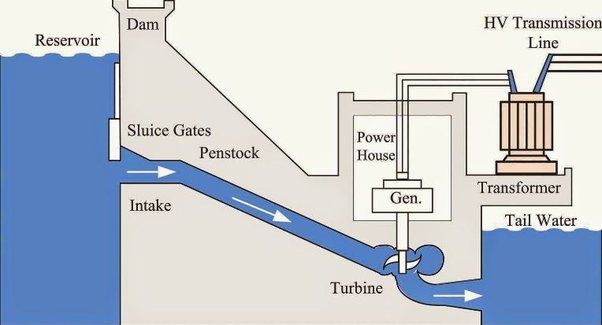
In 2020, hydropower supplied 17% of global electricity generation, ranking as the third largest source after coal and natural gas. Over the past 20 years, hydropower’s share of global generation has remained relatively stable at around 16%. Source
The top 5 countries for installed hydropower capacity in 2022 were China, Brazil, Canada, the United States, and Russia. China accounted for over 30% of global capacity. Source
Globally, hydropower output increased from 3,800 TWh in 2000 to over 4,300 TWh in 2019. This represents over a 10% increase in nearly 20 years. Source
Hydropower accounted for around 72% of renewable electricity generation globally in 2019. This highlights its significant contribution to renewable energy goals around the world. Source
Notable Hydropower Projects
Some of the most significant hydropower projects in the world include:
The Three Gorges Dam in China is the world’s largest power station in terms of installed capacity at 22,500 MW. Construction on the dam began in 1994 and was fully operational by 2012. The dam spans the Yangtze River and helps control devastating floods downstream. However, the massive reservoir has also displaced over 1 million people and altered the local ecosystem significantly.
The Itaipu Dam on the Brazil-Paraguay border is the second largest hydroelectric power plant in the world with an output capacity of 14,000 MW. Construction started in 1975 and operation began in 1984. The dam produces 90% of the electricity used by Paraguay and 17% of Brazil’s electricity needs.
The Grand Coulee Dam in Washington state, US is among the largest dams in the world. With a capacity of 6,809 MW, it is the largest power producer in the US. The dam was built between 1933 and 1942 originally for irrigation purposes but began generating power in 1941. It spans the Columbia River and created one of the largest man-made lakes in the US.
Sources:
https://en.wikipedia.org/wiki/List_of_largest_hydroelectric_power_stations
https://www.power-technology.com/features/feature-the-10-biggest-hydroelectric-power-plants-in-the-world/
Hydropower and Renewable Energy Goals
Hydropower plays a major role in reducing fossil fuel use and meeting renewable energy goals. According to the U.S. Department of Energy, hydropower is currently the largest source of renewable electricity in the United States, providing over 7% of total electricity generation and 46% of generation from renewables. With increased investments and upgrades to existing infrastructure, hydropower capacity is projected to grow by nearly 20 gigawatts (GW) by 2050, representing 15% growth over current capacity levels (https://www.energy.gov/eere/water/benefits-hydropower).
The outlook for growth in hydropower aligns with national renewable energy goals to reduce greenhouse gas emissions and combat climate change. The U.S. aims to achieve a carbon pollution-free electricity sector by 2035 and net-zero emissions economy-wide by 2050. To accomplish these goals, expanded use of renewable energy from sources like hydropower will be essential (https://www.energy.gov/eere/water/new-vision-united-states-hydropower). Modernizing existing hydropower infrastructure, powering non-powered dams, and testing new marine renewable technologies represent key opportunities for hydropower to play an even greater role in a clean energy future.
Environmental Impacts
While hydropower is a renewable energy source, it can have negative environmental impacts, especially on river ecosystems and wildlife habitats (source). Building dams and reservoirs for hydropower projects changes the natural water flow of rivers. This can negatively impact native plants and animals that rely on natural river flows and water levels (source).
Flooding areas for hydropower reservoirs destroys forests, wetlands, wildlife habitats, and agricultural land. The reservoirs themselves also create new aquatic habitats above the dams, changing the ecosystem (source). Reservoirs may cover important natural areas that provide habitats for birds, fish, and other wildlife.
There are also greenhouse gas emissions associated with hydropower, especially from the decomposition of organic matter in reservoirs. However, these emissions are generally lower than other energy sources like fossil fuels (source).
Alternatives to Hydropower
While hydropower is a renewable source of energy, there are concerns about its environmental impacts. Alternatives like solar, wind and geothermal energy can provide renewable power with less disruption to ecosystems.
Solar power harnesses energy from the sun using photovoltaic panels. It’s a clean, renewable source that doesn’t require dams or diversions. Solar farms can be built on vacant land and existing rooftops. Downsides include higher upfront costs and intermittency issues on cloudy days or at night. However, utility-scale solar combined with battery storage can provide consistent renewable energy to the grid.
Wind power utilizes large turbines to capture kinetic energy from wind. Wind farms have a smaller footprint than hydropower dams. While wind strength varies, forecasts allow grid operators to integrate wind effectively. Offshore wind farms avoid using land and provide more consistent wind resources. But they have higher costs for construction and transmission infrastructure.
Geothermal energy harnesses heat within the earth’s crust to generate steam and power turbines. While geographically limited, geothermal provides consistent baseload power with a small land footprint. Enhanced geothermal systems could unlock more potential by injecting water into hot rocks. There are concerns about induced seismicity, but strict protocols can lower risks.
Overall, solar, wind and geothermal can provide clean renewable energy without major civil works or ecosystem disruption. While costs are dropping, they remain higher than hydropower. But their environmental benefits may justify phasing in more projects to diversify energy sources while reducing hydropower expansion.
Conclusion
Hydropower is an important source of renewable energy derived from the natural flow of water, specifically from the potential energy from dammed water driving a water turbine and generator. While water power has been utilized for centuries, modern hydropower plants provide a clean, sustainable method for generating electricity to power homes and businesses.
As we explored, hydroelectric dams and power plants harness the kinetic energy of moving water to generate electricity without combustion or waste. This makes hydropower a standout renewable energy with advantages including sustainability, efficiency, reliability, low emissions, and cost-competitiveness. With ample water resources and infrastructure, hydropower accounts for over 16% of global electricity production and is often a backbone of renewable energy portfolios.
However, there are also notable disadvantages and environmental impacts. Dams and reservoirs may obstruct fish migration and change downstream water quality and flow. But new technologies and strategic dam placement can mitigate some of these challenges. Overall, hydropower remains a substantial renewable energy solution that will continue playing a key role in clean electricity generation for the foreseeable future.

